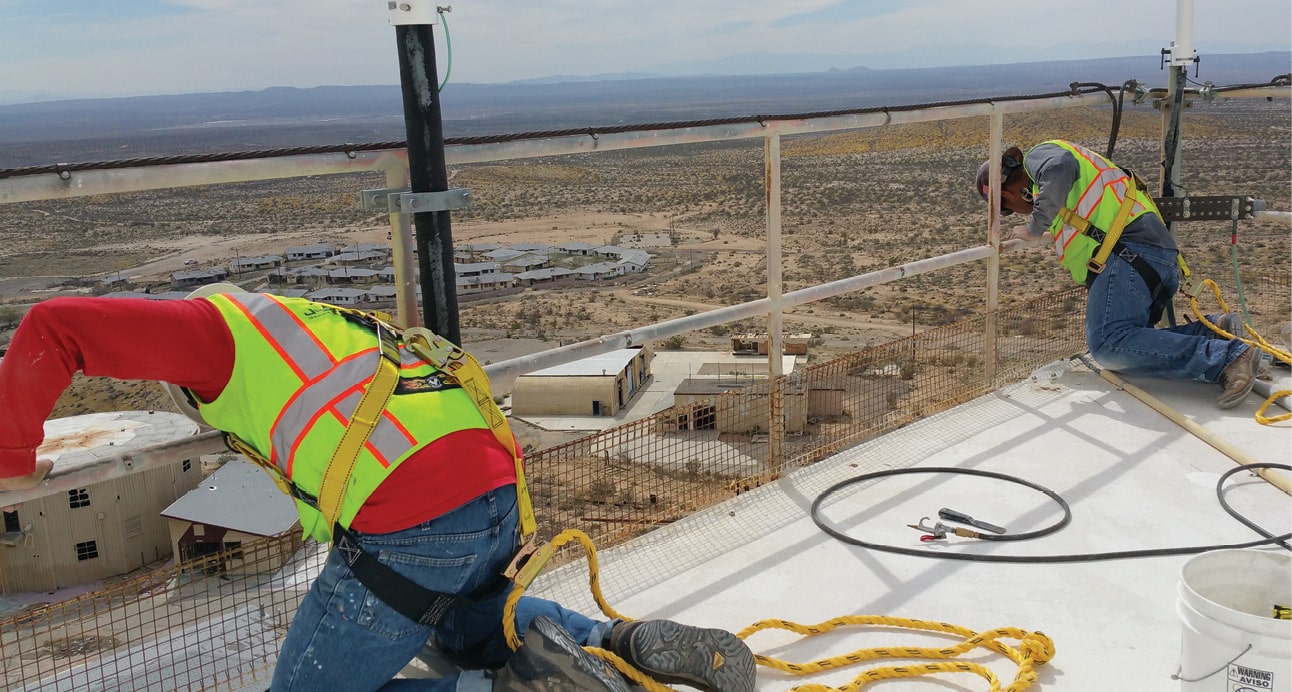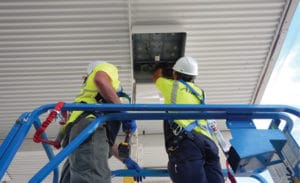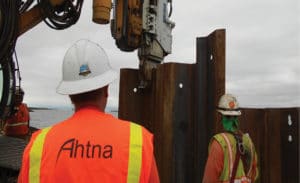By Pete Rice | Ahtna Corporate SHEP Director
Construction and construction-related activities, such as environmental remediation, are among the most dangerous industries in the country.

Ahtna personnel are engaged in multiple construction-related projects and exposed to Focus Four (also known as Fatal Four) hazards on a daily basis. You can also encounter Fatal Four hazards at non-construction project sites. Being aware of the hazards and following our “See Something – Say Something – Do Something,” “PACE” and “Do the Right Thing” culture is critical for safety on the work-site, as well as in performance of hobbies and projects off the job, perhaps around the home.
The Occupational Safety and Health Administration’s (OSHA) Fatal Four include falls, electrocution, struck by object and caught in/caught between hazards. These “Fatal Four” were responsible for more than 600 – nearly three out of five – construction-related worker deaths in 2016, the Bureau of Labor Statistics reports.
To mitigate these fatality statistics, OSHA and other professional safety and health organizations, both in the private and public sectors, are targeting the contributing factors.
Fall hazards
Of most construction activities, there is no greater chance of death or serious injury than when working at height. A fall hazard is any exposure condition at the work-site or home that could cause a person to lose their balance or lose bodily support and result in a fall. Any walking or working surface can be a potential fall hazard.
The three generally acceptable methods of protection for persons exposed to vertical drops of six feet (four feet in general industry) or more are guardrails, safety-net systems and personal fall-arrest systems.
•Guardrails are considered prevention systems as they stop the employee from having a fall in the first place.
•Safety-net systems are designed to catch the employee and break their fall. They must be placed as close as possible under the work surface, but never more than 30 feet below.
•A personal fall-arrest system consists of an anchorage, connectors and a full-body harness that work together to break the employee’s fall.

Electrical hazards
The number of deaths by electrocution clearly shows that exposure to electricity is a major hazard to construction workers.
- An electrical hazard can be defined as a serious workplace hazard that exposes workers to the following:
- •Burns
- •Electrocution
- •Shock
- •Arc flash/arc blast
- •Fire
- •Explosions
An average of 143 construction workers are killed each year by contact with electricity. Many persons are killed during contact with electrical energy while off the job.
The major types of electrocution incidents come from:
•Contact with overhead power lines
•Contact with energized sources (e.g., live parts, damaged or bare wires, defective equipment or tools)
•Improper use of extension and flexible cords
What are just some of the things we can do to better protect against electrocution hazards?
•Locate and identify utilities before starting work.
•Look for overhead power lines when operating any equipment.
•Maintain a safe distance away from power lines; learn the safe-distance requirements.
•Do not operate portable electric tools unless they are grounded or double-insulated.
•Use ground-fault circuit interrupters for protection.
•Be alert to electrical hazards when working with ladders, scaffolds or other platforms.
Struck-by hazards

Struck-by injuries are produced by forcible contact or impact between the injured person and an object or piece of equipment.
Struck-by hazards are categorized as follows:
•Struck by flying object
•Struck by falling object
•Struck by swinging object
•Stuck by rolling object
To better prevent struck-by incidents:
•Never position yourself between moving and fixed objects.
•Stay alert of heavy equipment, and stay clear of lifted or suspended loads.
•Check vehicles before each shift to ensure that all parts and accessories are in safe operating condition, and do not drive a vehicle in reverse gear with an obstructed rear view unless it has an audible reverse alarm or another worker signals that it is safe.
•Wear appropriate personal protective equipment (PPE), to include eye and face, head and high-visibility clothing.
Caught in/caught between hazards
Events that should be classified as “caught” include:
•Cave-ins (trenching)
•Being pulled into or caught in machinery and equipment (this includes strangulation as the result of clothing caught in running machinery and equipment)
•Being compressed or crushed between rolling, sliding or shifting objects, such as semi-trailers and a dock wall, or between a truck frame and a hydraulic bed that is lowering
Just a few tips to prevent caught in/caught between hazards include:
•Use machinery that is properly guarded.
•Use other methods to ensure machinery is sufficiently supported, secured or otherwise made safe (e.g. de-energize equipment and use lockout/tag-out and block-out procedures).
•Use protection to prevent being pinned between equipment, materials or other objects.
•Avoid entry to and working in unsafe excavations, and do so only after inspection by a competent person.
•Seek and take advantage of safety-training opportunities.
•Take extra precautions and considerations before entering confined or enclosed spaces.
Although Ahtna has a good record in avoiding Focus Four Hazards, we need to continue vigilance and practice safety 24/7.
